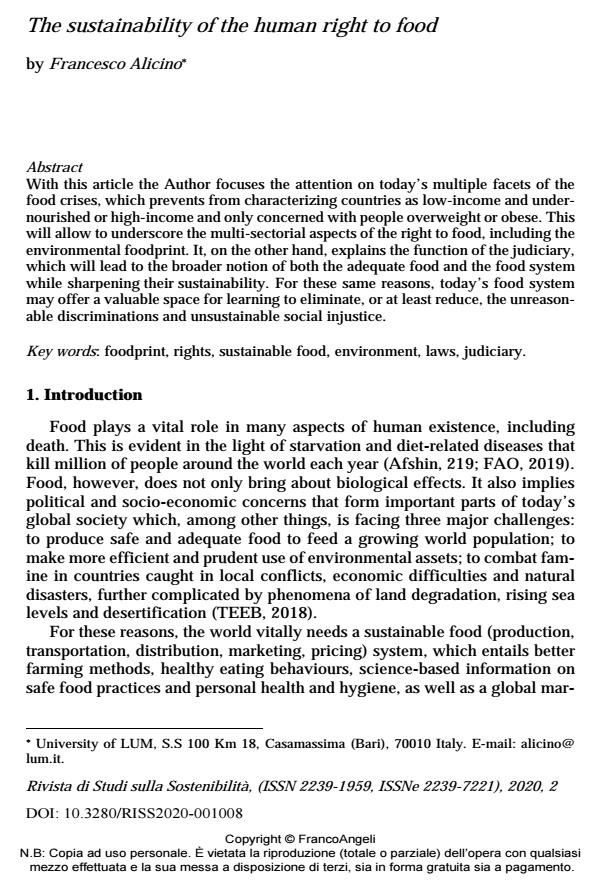The sustainability of the human right to food
Journal title RIVISTA DI STUDI SULLA SOSTENIBILITA'
Author/s Francesco Alicino
Publishing Year 2021 Issue 2020/2
Language English Pages 21 P. 125-145 File size 133 KB
DOI 10.3280/RISS2020-002008
DOI is like a bar code for intellectual property: to have more infomation
click here
Below, you can see the article first page
If you want to buy this article in PDF format, you can do it, following the instructions to buy download credits

FrancoAngeli is member of Publishers International Linking Association, Inc (PILA), a not-for-profit association which run the CrossRef service enabling links to and from online scholarly content.
With this article the Author focuses the attention on today’s multiple facets of the food crises, which prevents from characterizing countries as low-income and undernourished or high-income and only concerned with people overweight or obese. This will allow to underscore the multi-sectorial aspects of the right to food, including the environmental foodprint. It, on the other hand, explains the function of the judiciary, which will lead to the broader notion of both the adequate food and the food system while sharpening their sustainability. For these same reasons, today’s food system may offer a valuable space for learning to eliminate, or at least reduce, the unreasonable discriminations and unsustainable social injustice.
Keywords: Foodprint, rights, sustainable food, environment, laws, judiciary.
Francesco Alicino, The sustainability of the human right to food in "RIVISTA DI STUDI SULLA SOSTENIBILITA'" 2/2020, pp 125-145, DOI: 10.3280/RISS2020-002008